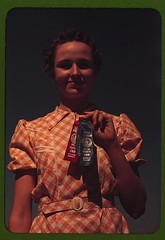Just last week, I wrote a post about improving my classroom communication by limiting my public speaking.
I was put to the test sooner than I expected.
As my substitute teaching gig continued, one of the provided lesson plans called for presenting two already-made PowerPoints on two different topics in one hour of one class session (the other hour was spent on an in-class quiz).
The thing is, subs really need to stick to the syllabus and provided lesson plan. My job was as much to provide stability as it was to reach the students. This was really not the moment to radically change the content delivery or otherwise deviate far from normal.
But putting everyone to sleep while I droned on wasn’t going to be particularly helpful, either.

So here’s what I did:
- Set expectations.
I always put an agenda on the board and cross out what we’ve finished. When we got to this last chunk of the class, I explained that we would do a PowerPoint and then practice it… then another PowerPoint with a practice activity. So we had a lot to do in the last hour of class, and we all knew it. - Kept it short.
Neither was one of those egregiously long PowerPoints, thank goodness. I did make an effort to keep it snappy without rushing. - Kept it interactive.
I used Think/Pair/Shares and asked for lots of responses during the presentations. The first one was clearly designed with an interactive class experience in mind, so this was easy for me. The second one was more of an information-dump and it was more of a challenge to keep it from being a soliloquy. - Used the whiteboard.
I wrote down my oral instructions (i.e. “think of two more examples with your partner”). This saved a lot of time and kept people focused. I also used the board to highlight or explain key points from the slides, e.g. the most important signal word, examples of prefixes, etc. - Built in change.
The plan was that after each PowerPoint, I’d immediately have students move their seats to practice the material in the context of the textbook article they’d read for homework. This was not going to be a solid hour of PowerPoint! - Went meta.
My assistant teacher knows this course extremely well, and told me that the students’ final project involves making a PowerPoint. She suggested that I point out good and bad attributes of the PowerPoints I was using today. I pointed out some, particularly on slides that were too wordy. - Split into smaller groups.
Though I presented to the whole class due to prep, space, and tech restraints, I split them up as soon as I could. I numbered them off (1, 2, 1, 2) so that the assistant teacher and I could explain the practice activity to the smaller groups instead of to the whole class. Those small groups then split into pairs and triads to carry out the activity.
I don’t want to come across like I think I taught the perfect lesson. I felt like I was spinning too many plates to be fully present with the class. Despite my PowerPoint vigilance, I did lapse into teacher talk at least once. I also gave my assistant teacher some vague directions and blanked on a couple ways I could have helped several students with general academic issues. Nothing disastrous, but enough that I couldn’t let this post be only about how focused and awesome I am.
That said, I did manage to focus on making the most of the PowerPoints, and I think it made a difference. In the all-class presentations, the students were engaged and answering questions, not passively reading slides. And the practice time made use of small and tiny group interactions to make the content more meaningful and help people stay alert at the end of a night class. I’m really glad it was in the forefront of my mind.
Photo Credit: Melissa on Flickr
You’re reading PowerPointing Better, originally posted at LearningToTeachEnglish.com.





